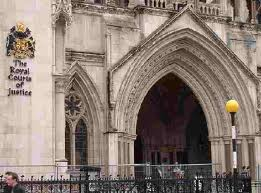The Upper Tribunal (Lands Chamber) has published its judgment in the case of Ahed Mahmod v Angela Annamalai (VO) (2018) UKUT 0020 (LC) which gives helpful guidance to valuers as to the approach to be adopted when valuing for rating purposes properties that are in a poor state of repair. The statutory basis of valuation for rating purposes includes an assumption of a “reasonable state of repair” but specifically excludes from that assumption any repairs that “a reasonable landlord would consider uneconomic”. When valuing a property in a poor state of repair it is therefore necessary to consider whether a reasonable landlord would consider it economic to repair the property.
The appeal property in this case was a vehicle repair workshop on Mitcham Lane, London SW16 built over 100 years ago and where the roof was in a poor state of repair at the relevant date with slipped and missing roof tiles that has allowed water ingress and damaged electrical installations.
The ratepayer submitted that the cost of repairs at the relevant valuation date would have been £56,000 excluding VAT, relying upon a written report prepared on his behalf. The ratepayer compared this cost to the Rateable Value of the property, which showed a ratio (on the ratepayer’s figures) of repairs costing 6.9 times the rateable value. The ratepayer submitted that such a ratio would not be considered economic by a reasonable landlord and that the rateable value should be reduced to a nominal figure in line with the determinations of nominal assessments in the cases of Monk v Newbigin (VO) (2017) and Barber (VO) v CEREP III TW SARL (2015).
The respondent Valuation Officer called expert evidence to the effect that the cost of works required at the relevant date was £44,500 excluding VAT. The Valuation Officer undertook a comparison of the value of the freehold interest in the building in its existing state of disrepair at a reduced rent, to its freehold value assuming the repair works were carried out and making a deduction for the cost of repair. This showed a capital value assuming letting in disrepair that was less than the capital value with the repairs undertaken and the cost of those works deducted. On this basis the Valuation Officer submitted that a reasonable landlord would consider it economic to carry out the works, and that the property should therefore be valued in an assumed reasonable state of repair.
The Tribunal considered that the Valuation Officer’s estimate of costs was to be preferred because an expert witness was called to support that estimate, enabling it to be tested in cross-examination before the Tribunal, whereas no expert was called to support the Appellant’s estimated costs. However, the Valuation Officer’s estimate of costs included things that were improvements, not repairs, and should be reduced accordingly. The Valuation Officer’s analysis was the correct approach but failed to allow for the reversionary value of the property in five years’ time if the repairs were not undertaken. Adjusting the analysis for this showed that, on the Valuation Officer’s figures, the repairs would not be economic. But such a conclusion depended upon two assumptions: firstly, that the condition of the property would not deteriorate further if the repairs were not undertaken for five years, and secondly, that the rental discount of 25% allowed by the Valuation Officer to reflect the poor repair was correct.
The Tribunal allowed a 10% increase in costs to reflect the fact that if no works were undertaken for five years the condition of the property was likely to deteriorate. The Tribunal also considered that a discount of 25% of rental value was inadequate to reflect the poor state of repair and that the proper level of discount was likely to be closer to 50%. At any discount for condition above 28.6% the cost of repairs would be considered economic by a reasonable landlord. The exact discount for this factor was not determined but it was likely to be close to 50% and a reasonable landlord would therefore consider it to be economic to carry out the works. This conclusion meant that the property was required to be valued in an assumed reasonable state of repair regardless of its actual condition. As the parties agreed that the correct value in a reasonable state of repair was Rateable Value £9,750, the Tribunal determined this figure.
This decision shows the importance placed by the Tribunal on being able to test evidence, in this case evidence of repair costs, be questioning and cross-examination of witnesses. The Valuation Officer’s evidence was preferred because a witness was at the hearing to support that evidence. The decision also gives valuers helpful guidance on the approach to be adopted when considering whether repairs would be considered economic, which is to compare the value of the freehold interest in the building in its existing state of disrepair at a reduced rent to its freehold value assuming the repair works were carried out and making a deduction for the cost of repair, and to ensure that such a comparison allows for the reversionary value in the scenario that repairs are not undertaken immediately. The correct discount for the poor state of repair is an important factor in this analysis and ratepayers may smile ruefully at the circumstances in this case which meant that a larger discount for disrepair (i.e. a building in a worse condition) had the effect of making the repairs ones that would be considered economic, and therefore meaning that the building should be valued in an assumed reasonable state of repair.
The assumption of a reasonable state of repair has caused significant problems for valuers where properties are dilapidated or re actually undergoing works of repair or redevelopment. Perhaps it is time to take the bold step of consigning the Rating (Valuation) Act 1999 to history and taking the novel position of valuing things as they actually are!

